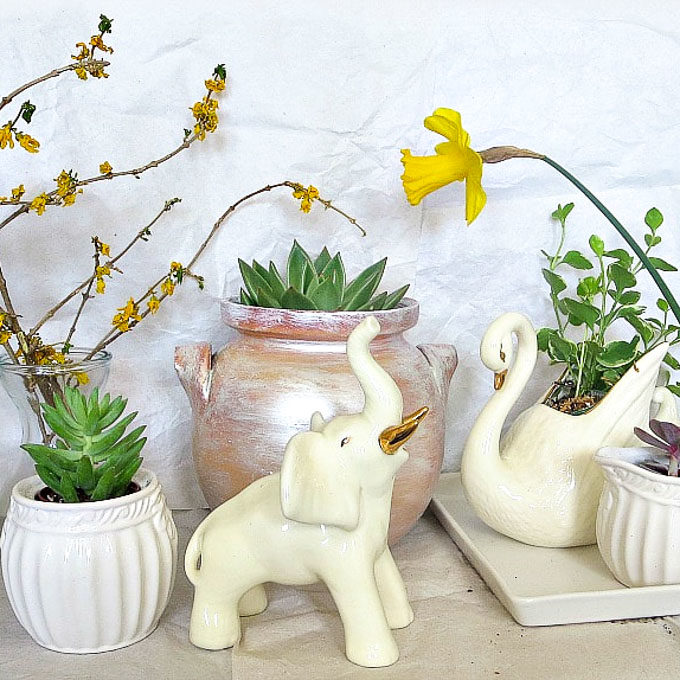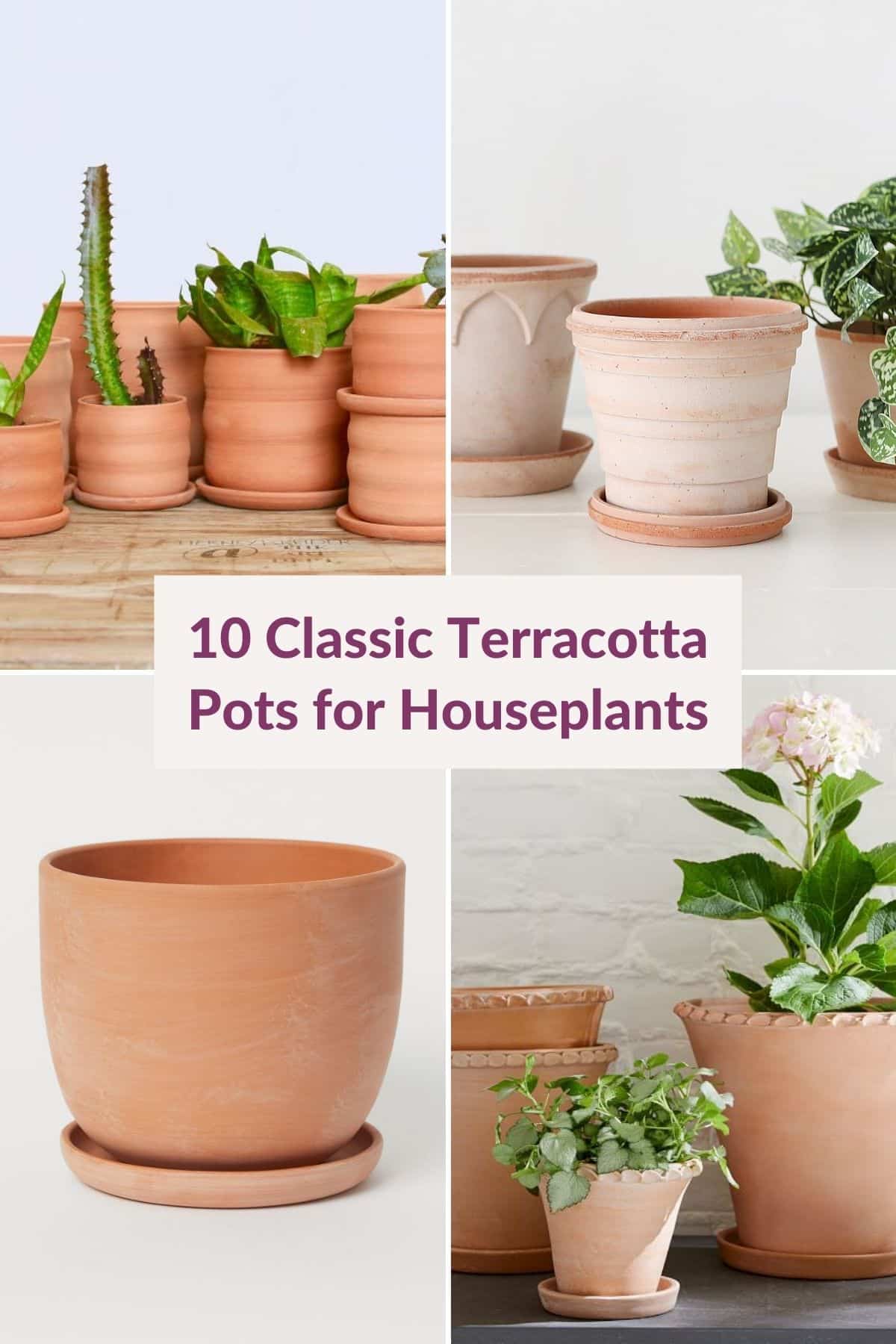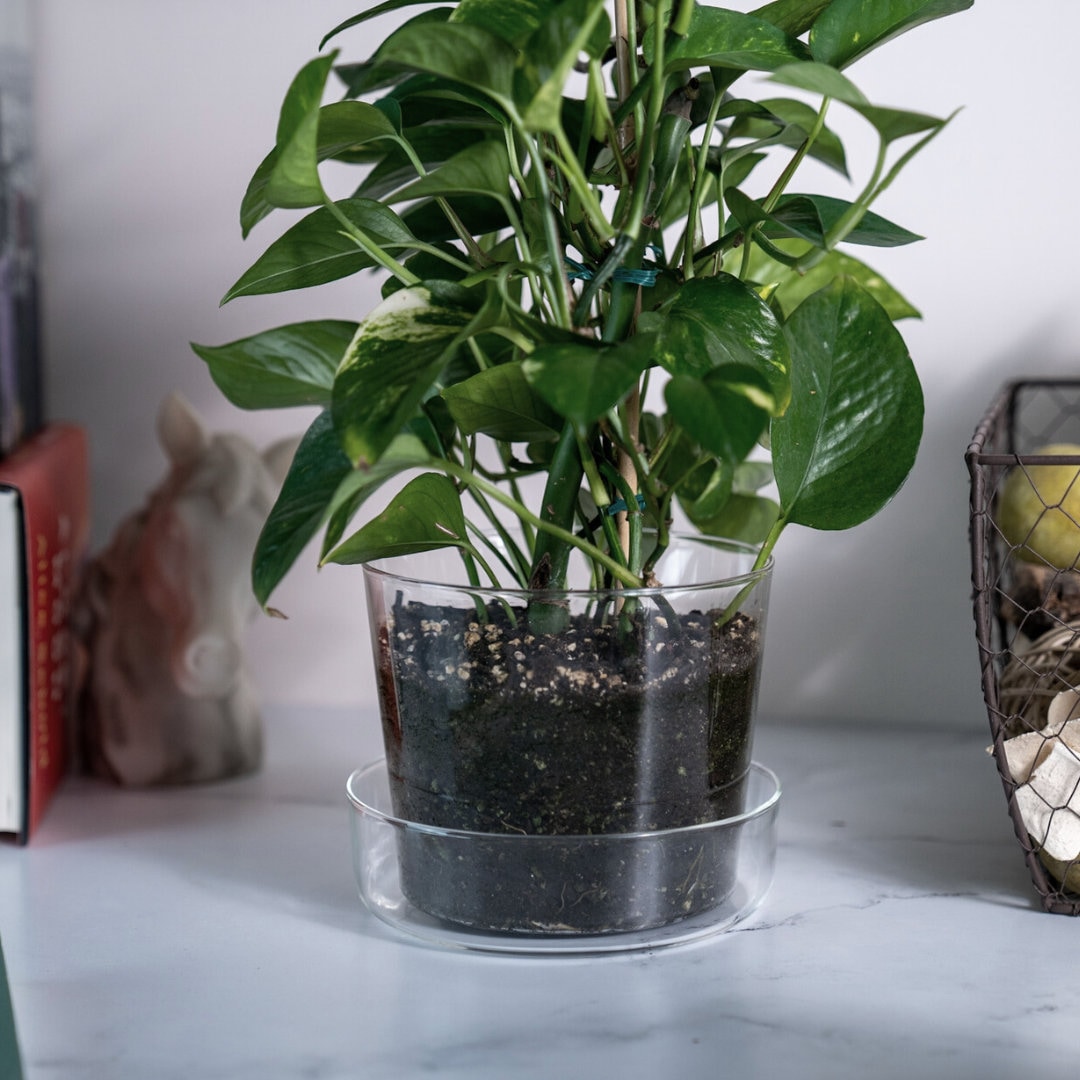Creative Plant Pot Ideas
Title: Creative Plant Pot Ideas
Introduction:
Plants are a great way to add life and beauty to any space, indoors or outdoors. But plain old pots can be boring. If you're looking for a way to add some personality to your plant collection, check out these creative plant pot ideas.
Main Content:
- Upcycled household items: There are endless possibilities when it comes to upcycling household items into plant pots. Old boots, tires, birdcages, even colanders can be transformed into unique and stylish planters.

- Terracotta pots: Terracotta pots are a classic choice for plant pots, and for good reason. They're inexpensive, durable, and porous, which allows the soil to breathe. If you're looking for a more rustic look, try painting your terracotta pots with a bright color or whitewashing them.

- Concrete pots: Concrete pots are another durable and stylish option. They can be made in a variety of shapes and sizes, and they can be painted or stenciled to match your décor.

- Metal pots: Metal pots are a great choice for outdoor plants. They're weatherproof and can withstand even the harshest conditions. Galvanized metal pots are a popular choice, but you can also find metal pots made from copper, brass, and other metals.

- Wooden pots: Wooden pots add a touch of warmth and natural beauty to any space. They're not as durable as some other materials, but they can be sealed to protect them from the elements.

- Glass pots: Glass pots are a unique and elegant choice for plant pots. They allow you to see the roots of your plants, which can be fascinating. Glass pots can be used indoors or outdoors, but they're not as durable as some other materials.

Conclusion:
No matter what your style or budget, there's a creative plant pot out there that's perfect for you. So get creative and have fun with it! Your plants will thank you.
Plant pots come in all shapes and sizes, from small ceramic pots for succulents to large terracotta pots for trees. They can be made from a variety of materials, including plastic, metal, and wood. Plant pots can be used indoors or outdoors, and they can add a touch of style to any home décor.
If you're looking for more information about plant pots, [visit Home Gardening]. Home Gardening is a comprehensive resource for all things plant pots, including types of plant pots, materials, and styles. You can also find tips on how to care for your plant pots and how to choose the right pot for your plants.
FAQ of plant pots
Here are some frequently asked questions about plant pots, along with valuable insights and solutions:
- What size pot do I need for my plant?
The size of the pot you need for your plant depends on the size of the plant itself, as well as the type of plant. Generally speaking, you want to choose a pot that is about 2 inches wider and deeper than the root ball of your plant. This will give the roots enough room to grow without becoming overcrowded.
- What material should I choose for my plant pot?
There are many different materials that can be used for plant pots, including plastic, terracotta, ceramic, and wood. Each material has its own advantages and disadvantages. For example, plastic pots are lightweight and inexpensive, but they can be less durable than other materials. Terracotta pots are porous, which allows for good drainage, but they can also dry out quickly. Ceramic pots are durable and attractive, but they can be more expensive than other materials. Wood pots are natural and stylish, but they can be susceptible to rot.
- How often should I water my potted plants?
The frequency of watering your potted plants depends on a number of factors, including the type of plant, the size of the pot, and the climate. However, as a general rule, you should water your plants when the top inch of soil is dry to the touch. Be sure to empty the drainage tray after watering to prevent the roots from sitting in water.
- How do I fertilize my potted plants?
Most potted plants need to be fertilized regularly in order to thrive. The frequency of fertilization depends on the type of plant, but it is generally recommended to fertilize your plants once a month during the growing season. You can use a liquid fertilizer or a slow-release fertilizer. Be sure to follow the directions on the fertilizer label carefully.
- How do I prevent pests and diseases in my potted plants?
The best way to prevent pests and diseases in your potted plants is to keep them healthy. This means providing them with adequate sunlight, water, and fertilizer. You should also inspect your plants regularly for signs of pests or diseases. If you do find any problems, you can treat them with insecticidal soap, neem oil, or another appropriate pesticide.
- How do I overwinter my potted plants?
If you live in a cold climate, you may need to overwinter your potted plants indoors. To do this, choose a location that is bright and cool, with temperatures between 50 and 60 degrees Fahrenheit. Water your plants less frequently during the winter months, and do not fertilize them.
Image of plant pots
10 different images of plant pots that are free to use:
- Clay pot: Clay pots are a classic choice for plant pots. They are porous, which allows the soil to breathe and prevents the roots from rotting. Clay pots are also relatively inexpensive and can be found in a variety of shapes and sizes.

- Plastic pot: Plastic pots are another popular choice for plant pots. They are lightweight, durable, and affordable. Plastic pots are also available in a wide variety of colors and styles.

- Glazed ceramic pot: Glazed ceramic pots are a more elegant option for plant pots. They are moisture-resistant and easy to clean. Glazed ceramic pots can be found in a variety of colors and finishes.

- Terracotta pot: Terracotta pots are made from a type of clay that is fired at a high temperature. They are porous, which allows the soil to breathe and prevents the roots from rotting. Terracotta pots are also relatively inexpensive and can be found in a variety of shapes and sizes.

- Concrete pot: Concrete pots are a modern and stylish option for plant pots. They are durable and can withstand harsh weather conditions. Concrete pots are also available in a variety of colors and finishes.

- Metal pot: Metal pots are a unique and eye-catching option for plant pots. They are available in a variety of metals, including copper, brass, and iron. Metal pots can be found in a variety of shapes and sizes.

- Wire pot: Wire pots are a versatile option for plant pots. They can be used to create a variety of different looks, from simple and rustic to elegant and sophisticated. Wire pots are also available in a variety of sizes.

- Rattan pot: Rattan pots are a natural and stylish option for plant pots. They are lightweight and can be easily moved around. Rattan pots are also available in a variety of shapes and sizes.

- Wooden pot: Wooden pots are a classic and elegant option for plant pots. They are available in a variety of different woods, including oak, maple, and cedar. Wooden pots can be found in a variety of shapes and sizes.

- Paper pot: Paper pots are a sustainable and eco-friendly option for plant pots. They are made from recycled paper and can be composted when they are no longer needed. Paper pots are available in a variety of shapes and sizes.
Post a Comment for " Creative Plant Pot Ideas"